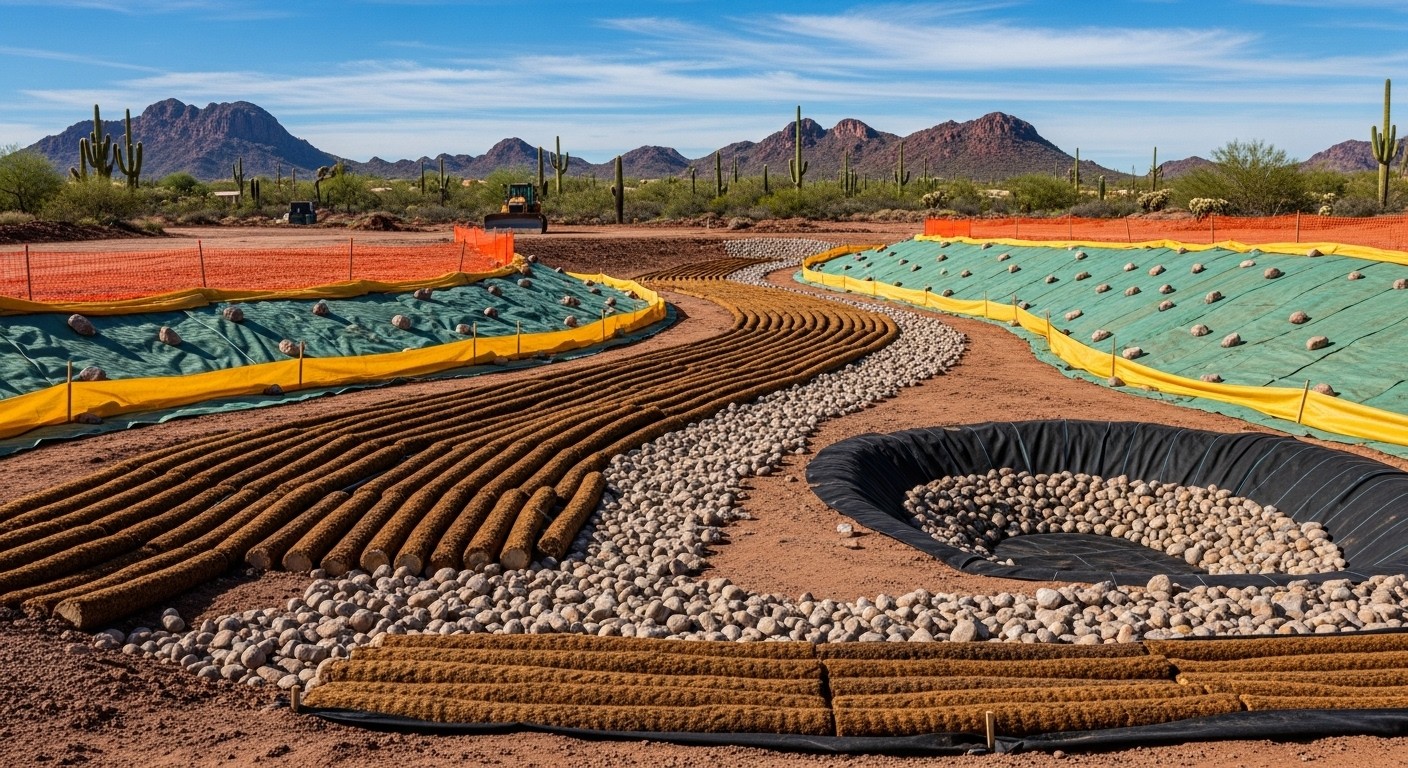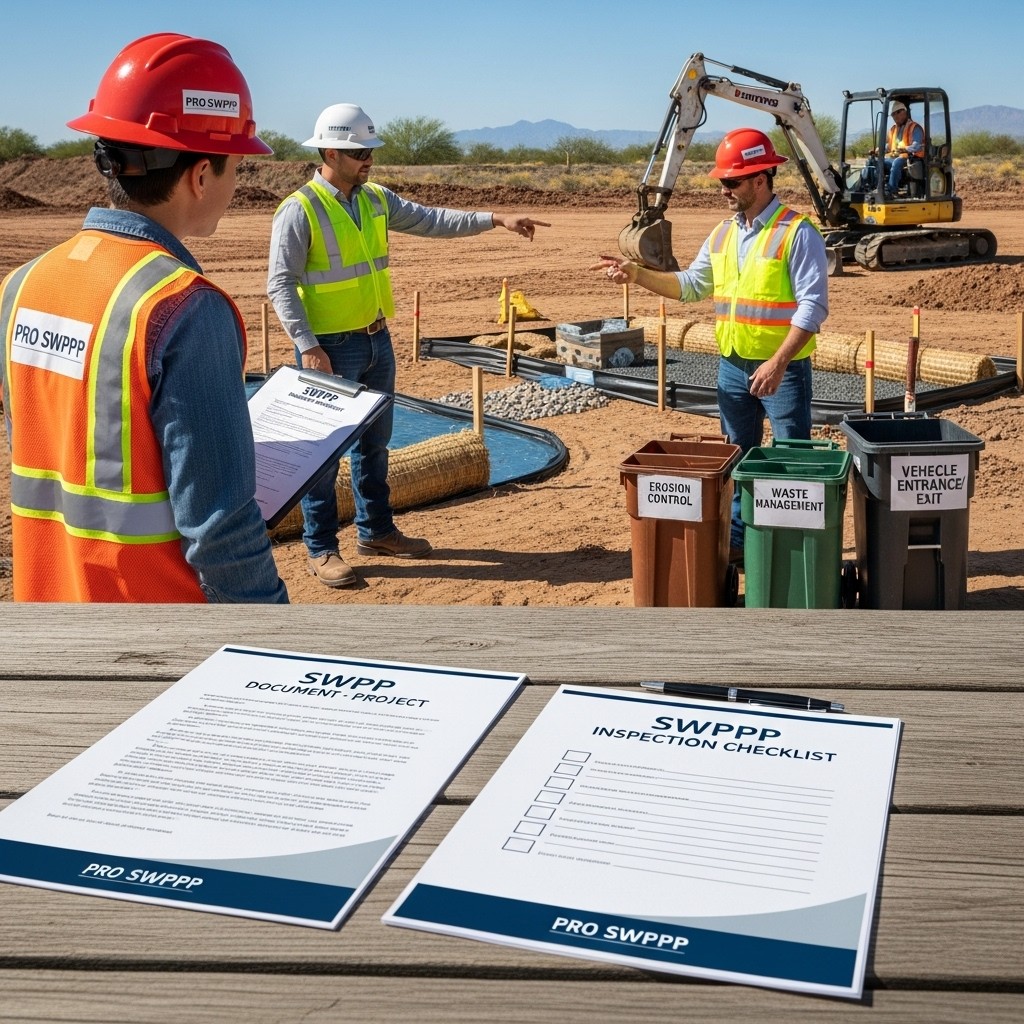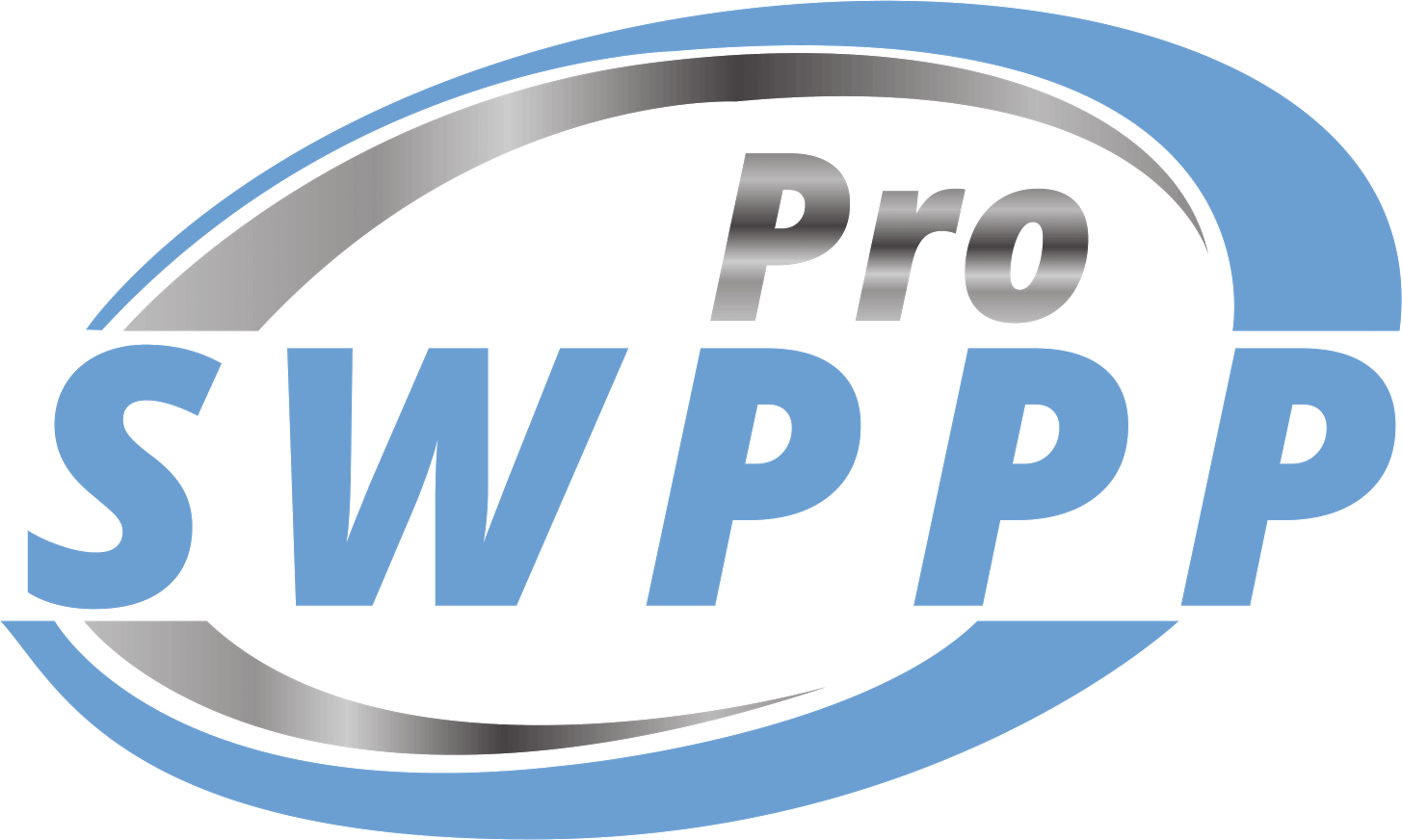Arizona contractors are getting hit with stormwater violations left and right. The problem is simple — most people have no clue when they need a Stormwater Pollution Prevention Plan (SWPPP, SW3P) or just an NOI. And the penalties? They’ll crush your business faster than a monsoon flood.
Here’s the truth: If you’re disturbing 1 acre or more of land in Arizona, you need both a SWPPP and an NOI under the Arizona Pollutant Discharge Elimination System. Miss this requirement and you’re looking at fines that can reach tens of thousands of dollars per day.
But here’s what nobody tells you — even if you’re under 1 acre, you might still need permit coverage depending on your specific situation. Let me break this down so you can sleep at night knowing you’re compliant.
When Arizona Contractors Must Have a SWPPP
The Arizona Department of Environmental Quality doesn’t mess around. Under the Clean Water Act and NPDES program, construction activities disturbing 1 acre or more require full SWPPP coverage through the Construction General Permit.
This means you need:
- A complete Stormwater Pollution Prevention Plan
- Best Management Practices tailored to your site
- Regular inspections every 7-30 days
- Maintenance records for all erosion control measures
- Sediment control systems that actually work
Don’t want to mess with all the paperwork and requirements? Save yourself the headache and hours of work, and get fully compliant with Pro SWPPP’s Professional CPESC Certified SWPPP services in Arizona.

The permit fees alone range from $250 for smaller projects to over $500 for large sites. But that’s nothing compared to violation penalties that can shut down your entire operation.
Special Rules for Arizona’s Protected Waters
Arizona has something called “Outstanding Arizona Waters” — and if you’re within 0.25 miles of these areas, you’re playing in the big leagues. The state requires enhanced BMPs and stricter monitoring that goes beyond standard requirements.
Think of it like this: Regular sites need basic protection, but these special areas need Fort Knox-level security for stormwater runoff.
Recent updates in 2022 and 2023 have made these requirements even tougher. The Arizona Department of Environmental Quality isn’t backing down on enforcement either.
Notice of Intent – Your First Step
Before you can legally disturb any soil, you must file a Notice of Intent. This document tells the state you’re planning construction and triggers your permit coverage.
Here’s the kicker – both project owners AND contractors need to file if they’re responsible for day-to-day activities. No exceptions.
The NOI must be submitted before construction starts. File late and you’re already in violation before you move the first shovel of dirt.
What Goes Into an Arizona SWPPP
Your SWPPP isn’t just some paperwork you file and forget. It’s a living document that must include:
- First, identify every potential pollutant source on your site. We’re talking sediment, chemicals, construction debris, fuel storage – everything that could contaminate stormwater runoff.
- Second, specify your Best Management Practices. Cookie-cutter plans don’t work. Your BMPs must match your specific site conditions, soil types, and construction activities.
- Third, create an inspection schedule that meets state requirements. Inspections must happen at least every 7-30 days, depending on your BMPs, plus within 24 hours after any storm event with 0.25 inches or more of rainfall.
- Fourth, develop a maintenance plan for when your erosion control and sediment control measures need repairs or replacement.
- Finally, keep an updated list of all contractors and subcontractors working on the project. The SWPPP must be kept onsite and updated within 15 business days of any changes.

Common Mistakes That Trigger Violations
I see contractors make the same mistakes over and over. The biggest one? Thinking the property owner handles everything.
Wrong. Both owners and contractors share responsibility. If you’re doing the work, you need your own permit coverage and coordinated SWPPP responsibilities.
Another killer mistake is using generic SWPPPs that don’t match site conditions. Arizona inspectors can spot these from a mile away, and they result in immediate violations.
Missing post-storm inspections is violation number three. Arizona weather can be unpredictable, and 24-hour inspection requirements are non-negotiable.
Not sure what your project needs? Take our SWPPP Quiz or Schedule a Free SWPPP Consultation with CPESC Certified SWPPP Expert Derek E. Chinners.
Training Requirements You Can’t Ignore
Arizona requires specific training for construction site personnel. The Arizona Association of General Contractors offers Erosion and Sediment Control Certification, especially for ADOT projects.
But here’s what most people miss – having untrained workers install or maintain BMPs leads to system failures and automatic violations. The state is expanding training requirements due to too many compliance failures.
ADOT’s 2023 updates emphasize enhanced training and digital documentation. They’re not playing games anymore.
How Arizona Compares to Other States
Arizona’s requirements are similar to other states but with unique twists. Texas has its own specific requirements under TCEQ, while Georgia follows different protocols under its state program.
The 1-acre threshold is consistent across most states following federal NPDES guidelines, but Arizona’s Protected Waters requirements are stricter than many other states.
Digital Systems and Future Changes
Arizona uses online systems for NOI submissions and fee payments, making the process more efficient than paper-based systems in some states.
The trend is moving toward digital SWPPPs with integrated inspection data and real-time monitoring systems. Forward-thinking contractors are already adopting these technologies to stay ahead of compliance requirements.
Advanced BMP technologies like enhanced stormwater filtration are becoming standard on larger projects, especially those near Protected Waters.
FAQs
Do I need a SWPPP for projects under 1 acre in Arizona?
Generally, no. But you may need coverage if your small project is part of a larger common plan of development that totals 1 acre or more, or if local municipalities have stricter requirements.
How much do Arizona SWPPP permits cost?
Permit fees range from $250 for projects under 1 acre to over $500 for projects exceeding 50 acres, plus additional fees for SWPPP reviews and modifications.
What happens if I start construction without an NOI?
You’ll face immediate violation notices and daily penalties that can reach thousands of dollars per day until you achieve compliance and stop any unpermitted discharges.
Who can prepare a SWPPP in Arizona?
While anyone can prepare a SWPPP, using CPESC-certified professionals ensures compliance with current regulations and reduces violation risk significantly.
How often must I inspect BMPs in Arizona?
Inspections must occur at least every 7-30 days, depending on BMP types and effectiveness, plus within 24 hours after any qualifying storm event of 0.25 inches or more.
Arizona stormwater compliance doesn’t have to be complicated when you work with experienced professionals. Pro SWPPP is America’s #1 SWPPP service, and we’ve helped thousands of contractors stay compliant while focusing on their actual construction work. Get started with Pro SWPPP today.
